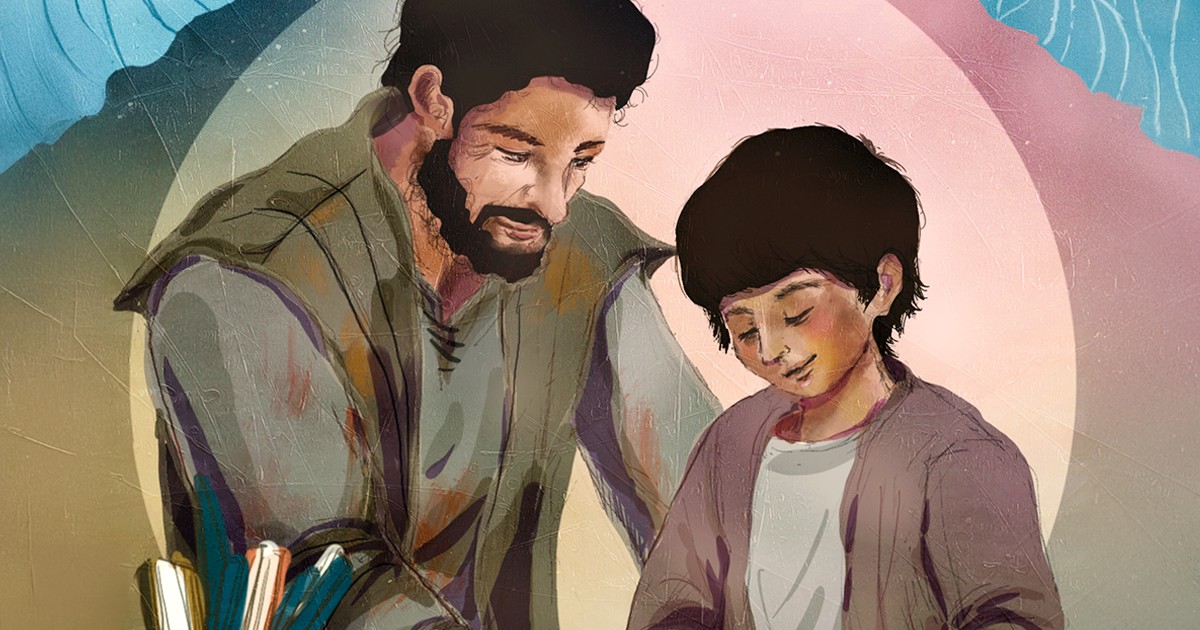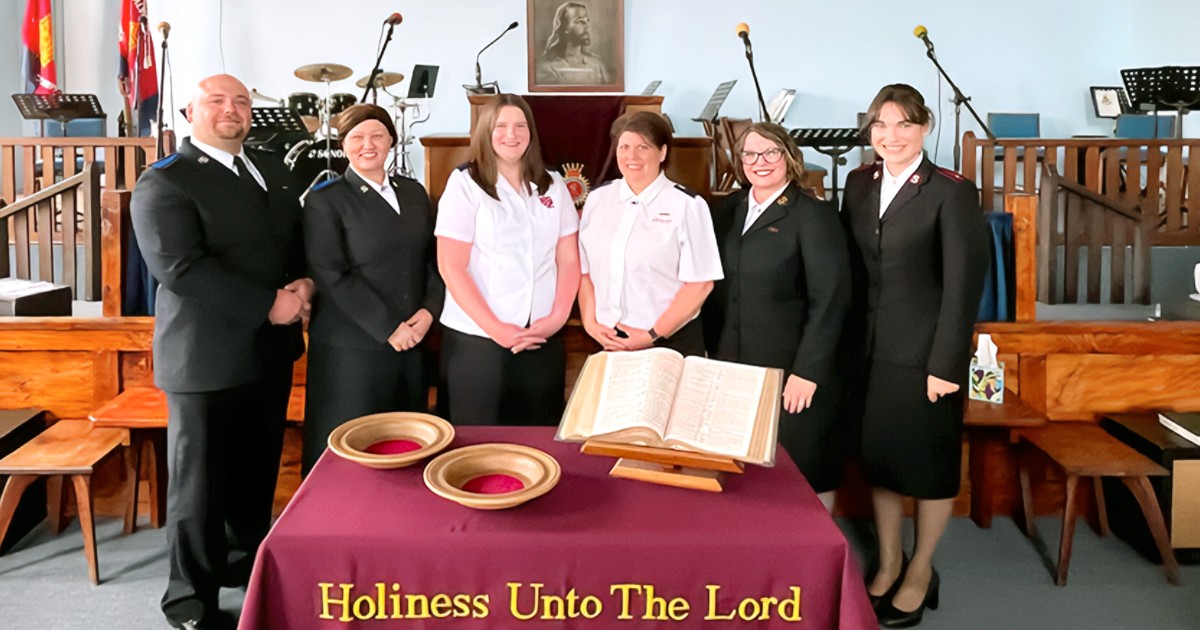One of my earliest memories as a child is participating in the Christmas pageant at church. I had so desperately wanted to play the angel, dressed all in white, wearing wings and a halo made of silver tinsel. Alas, a tall, lanky blonde was cast in the role, her long golden hair shining in the light of the Christmas tree as she stood, tall and proud, reciting her lines.
The adults all told me my role was important, too, and that I should be equally proud. But honestly, I had no desire to ride on a pretend donkey down the centre aisle, flanked by wooden pews and staring eyes. I had no desire to dress all in blue, including a long cloth that covered my frizzy brunette locks. I did not want to carry a doll—I was too old for that! Even the hand-crocheted blanket, which was gifted to me for baby Jesus (“You get to keep it when the play is done!” the kind woman exclaimed as she gave it to me) was not enough to quell my displeasure.
I had been cast as Mary. And I was not pleased.
Nearly 30 years later, I have come to know and love Mary’s story. But the more I’ve learned, the more I’ve realized that her story doesn’t look much like the Christmas pageant of my childhood. Nor does it look much like the porcelain Nativity scene my mom proudly displayed each year beside the television. In many ways, the story of Jesus’ birth has been warped by generations of reading the biblical narrative through Western eyes. Because our culture is so saturated with these distorted representations of the Christmas story, it can be difficult to sort fact from fiction.
Look Again
For starters, that beautiful, blond, female angel we always picture—the one I so desperately wanted to play? There’s no guarantee this angel was a girl. Granted, angels are spiritual beings and may not have gender at all, but in Scripture, all angels who are identified by name are described as male. Remember the angel, Gabriel, who announced Mary’s unique experience in the first place? The original Greek word used here for angel is a masculine noun. It really should have been my friend, Nathan, dressed up in dazzling white for the pageant.
As for my Mary costume, it’s unlikely she would have been wearing blue. Mary was a peasant, and expensive dyes, such as the colour blue, would likely not have been attainable for someone of her socio-economic position. Rather, the tradition of Mary wearing blue has come about for a number of symbolic reasons: the colour blue often signifies the Jewish people; blue is seen as a pure colour and symbolizes her virginity; and blue also signifies the holiness and divinity of the child she carries. So, it would have been more appropriate for me to be wearing, say, beige linen.
The donkey is another misrepresented aspect of the Christmas story. While many modern versions of the Nativity portray Mary as being carried by a dutiful donkey all the way from Nazareth to Bethlehem, it’s improbable this was the case. Not only would it have been rather uncomfortable for a pregnant woman to travel in this way, there’s absolutely no mention of Mary doing anything but walking in both biblical accounts of the Christmas story.
But it’s not learning the truth about the colour of Mary’s wardrobe or her form of transportation that has captivated me all these years later. Rather, it’s her experience in Bethlehem that has touched my mother-heart.
A Home Birth
The Christmas after giving birth to my first child, I began to wrestle with the traditional Christmas story that presented Mary giving birth with no support in an unknown town. I could not have imagined labouring without the emotional and physical support of loved ones around me. I knew that God had asked Mary to take on a challenging role in birthing and raising the Messiah, but the thought of her enduring the birth on her own broke my heart.
I started to explore Mary’s story in detail and discovered there was a lot of debate about what happened the night Mary gave birth to Jesus. Some held to the traditional view that I had been raised to believe—upon arriving in Bethlehem, there was no vacancy at the local hotel, and so Mary had given birth alone, in what I had pictured as a typical barn. Others claimed there were no free-standing barns in Bethlehem at the time, suggesting instead that Jesus was born in a cave.
And then I discovered a completely different interpretation of the text in Luke 2. Biblical scholar Kenneth E. Bailey, who lived and studied in the Middle East for several decades, presents a fascinating argument for a different-looking Nativity in his book, Jesus Through Middle Eastern Eyes. Bailey reminds us that Joseph was from the family line of King David and, as such, would have been warmly welcomed almost anywhere in Bethlehem, the “City of David.”
In the biblical text, the time spent in Bethlehem between their arrival and the birth of Jesus is not specified. Luke 2:6 says, “While they were [in Bethlehem], the time came for her to deliver her child” (NRSV). This is a far cry from saying, “as soon as they arrived” the time came for her to deliver. Bailey suggests there would surely have been enough time to find shelter in a town where most homes would have welcomed Joseph and his wife.
Typical first-century Judean homes had only two rooms: the main living chamber for the family, and a second room exclusively for guests. As a descendant of King David, even if all the guest rooms were taken by other pilgrims, Joseph would still have been welcomed into a family’s main living quarters.
What’s more, Bailey points out that there isn’t a culture on earth where a woman giving birth isn’t given special attention. And in ancient Judea, where hospitality was held in such high regard, it would have been shameful not to assist Mary in the birth of her first-born child.
It’s most likely, then, that Mary did not give birth in a barn or in a cave. Rather, she probably gave birth in a traditional Middle Eastern home, where the family cow, donkey and a few sheep were housed during the night along with the family. It’s possible that the guest room was filled, and so Mary and Joseph stayed with the family who lived there permanently.
Doesn’t this paint a beautiful picture? Mary, not isolated or alone on that first Christmas, but welcomed into the main family room for a home birth, surrounded and supported by Joseph’s extended family.
The arrival of the shepherds corroborates this likely reality. Following their own encounter with a host of angels, they hurried to Bethlehem to see this child that has been born. Following their visit, they shared their good news with everyone they met, and all were amazed. As the text says, they “made known what had been told them about this child” (Luke 2:17 NRSV). Keeping in mind how important hospitality was in ancient Middle Eastern culture, had these shepherds found the promised Messiah in anything but perfectly adequate accommodations, they would probably have invited Mary and Joseph to their homes so their wives could care for the new mother. They most definitely would not be spreading word of the Messiah knowing that God’s promised Saviour was sitting in a barn.
Humble Beginnings
None of this should detract from the humble beginnings of our Servant King. While Mary, and Jesus, were adequately cared for that first Christmas, the reality is that Jesus was still born in a common village home and was first visited by lowly shepherds.
He was also visited by the rich and wise. Matthew’s story tells of Wise Men coming from the East to visit the promised Messiah. But here’s where we often get things wrong again. While the Bible says they brought three gifts: gold, frankincense and myrrh, nowhere does it say that there were three men. There could have been a whole trove of them, or only two—we’re just not sure.
It’s also incredibly unlikely that the Wise Men arrived the night Jesus was born. Matthew 2:1 simply tells us that, “In the time of King Herod, after Jesus was born in Bethlehem of Judea, Wise Men from the East came to Jerusalem” (NRSV). It would have taken some time for them to stop off in Jerusalem (which they did after Jesus was born) and then make their way to Bethlehem. We also know that King Herod issued the killing of all boys under the age of two, not only infants. All this evidence points to the Wise Men not being on the scene that first Christmas night.
Perhaps it is time to start rewriting our traditional pageants to better reflect the truth of that first Christmas. As we do so, the story will not be diminished. Instead, it will truly reflect the blessing and wonder, beauty and hope that we have all come to expect at Christmastime.
Captain Laura Van Schaick is the divisional secretary for women’s ministries in the Ontario Division.
Photo: Tom Keenan/Lightstock.com
Who was Joseph? What was his influence upon Jesus? What can we learn about fatherhood from his story? Matthew helps us to answer these questions. He refers to Joseph more than the other Gospels do, granting readers a unique perspective on Jesus’ human family of origin.
Island Hoppers
A trip to Bermuda enabled four candidates from Newfoundland and Labrador to experience hands-on ministry and share their calling to full-time ministry.
by Ken Ramstead FeaturesAs The Salvation Army’s Atlantic divisional candidates secretary, Major Louise Pond is well aware that officer recruitment is a priority for the territory. And one of the priorities for the recruitment strategy is to identify potential candidates for officership. But how to get potential candidates enthused and motivated? Ashley helping out at
Read More
Homeless Before Christmas
Unhoused at the age of 72, Brenda joined her voice with other “voices of homeless women” who were being helped by The Salvation Army.
Major Joy Angel Faith & FriendsBrenda shares her experience of becoming homeless at the age of 72 and how she was inspired to join her voice with other "voices of homeless women"who were being helped bt The Salvation Army.










Leave a Comment